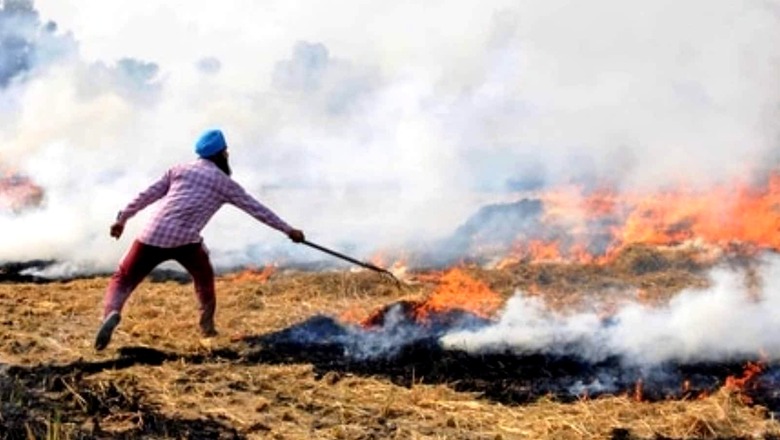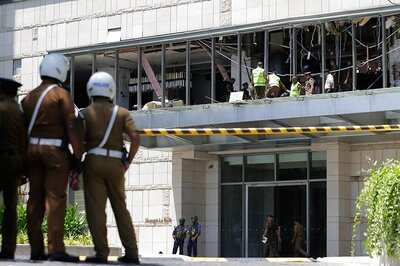
views
Farm fire incidents crossed an alarming 30,000 mark in Punjab with the state witnessing 2,487 stubble-burning cases on Monday. With fresh crop residue burning incidents, the cumulative farm fire cases from September 15 to November 7, rose to 32,486, according to the Ludhiana-based Punjab Remote Sensing Centre data.
The state reported 57,696 and 37,933 farm fires during the same period in 2020 and 2021, respectively. Out of a total of 2,487 farm fire incidents on Monday, Ferozepur witnessed 353 crop residue burning incidents—the highest in the state, followed by 268 in Moga, 257 in Muktsar, 256 in Batala, 218 in Faridkot, 202 in Barnala, 180 in Sangrur, 177 in Fazilka and 165 in Mansa, according to the data.
As the pollution situation in Delhi refuses to abate, this development on the stubble burning front further disappoints. But despite measures introduced by the government, why are farmers struggling to discard their crop residue in Punjab?
Cost a Factor
According to a report by Tribune, the government’s response to stubble burning has ranged from a blanket ban with severe fines to subsidies for alternative crop residue management technology. Since the launch of the Central Sector Scheme to promote in-situ crop residue management in 2018, the Union Ministry of Agriculture has spent approximately Rs 3 billion on distributing over two lakh subsidised machines to farmers in Punjab, Haryana, Uttar Pradesh, and Delhi at a subsidised cost (offering a 50% discount to individual farmers and an 80% discount to self-help groups). However, the majority of the region’s farmers, mostly small and marginal, continue to oppose the use of in-situ machines for a variety of reasons, most of which are financial and efficiency-related.
A report by Indian Express explains how farmers prefer to burn the residue as a quick and inexpensive way to clear the field. Machines incur costs that can reduce profit margins, even when rented from hiring centres or cooperative societies.
Due to the high cost of the machines (super-seeders can cost more than Rs2 lakh), the Union government currently provides a 50% subsidy to individual farmers and an 80% subsidy to farmers’ groups or cooperative societies purchasing crop residue management machinery such as super-seeders, mulchers, and happy seeders.
While small farmers (with up to 5 acres of land) and marginal farmers (with up to 2.5 acres of land) can rent machines for free from custom hiring centres or cooperative societies, the machines are tractor-mounted, and using them requires fuel, which is expensive, the report explains.
Lukewarm Response to Bio Decomposers
The PUSA bio-decomposer, a microbial solution designed to help decompose paddy stubble, was another measure that the AAP government planned to trial in Punjab this year, in addition to the third year of its use in Delhi. While some farmers had never heard of the bio-decomposer, others were sceptical of its utility.
Stubble-burning a socio-economic problem
The report by Tribune also argues for to recognise that crop residue burning has broader socioeconomic roots than agricultural or waste management. “Educating and empowering farming stakeholders are critical steps in making a significant impact. Farmers require continuous support from trained personnel at the village level for the effective implementation and success of any interventions aimed at reducing the threat of stubble burning. Farmers’ mindsets must be changed by educating them on the cost-benefit aspects of using crop residue on agricultural land. As a result, awareness campaigns should always run concurrently with the implementation of a practical solution that not only empowers them technically, but also economically,” it said.
With PTI inputs
Read all the Latest Explainers here


















Comments
0 comment